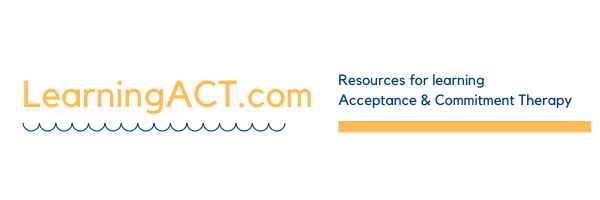Fresh data on ACT and RFT seem to be surfacing almost continuously these days. In this edition of our newsletter, we are especially intrigued by a forthcoming article on the use of ACT with children experiencing chronic pain.
One of the distinctions that we often make as ACT therapists with our clients is that between pain and suffering. While pain is regarded as the direct result of difficulties in our lives, whether it is a physical ailment or natural response to life challenges, suffering is the indirect result of being a verbal human being who compares, evaluates, and struggles with our pain. Much of ACT treatment involves teaching clients to cultivate a different relationship with their suffering. A new study by Rikard Wiksell, working with adolescents with physical ailments, suggests that ACT can be a useful treatment for changing one’s relationship to chronic pain as well. Dr. Wiksell compared ACT treatment with a multidisciplinary treatment approach that included an antidepressant, and found that children receiving ACT had better outcomes not only in their psychological functioning, but their physical functioning as well. In fact, these better outcomes were still significantly better than the multidisciplinary treatment at a 7 month follow-up. Although these children had physical problems, their physical and psychological suffering decreased via the exposure-based processes in ACT. Arguably, acceptance, defusion, and commitment to valued activities increased the quality of these kids’ lives.
A growing body of literature suggests that chronic pain is a substantial problem among children, and that these children are at risk for continuing problems into adulthood. Most of the research has addressed means of reducing pain and distress, and CBT is an established treatment for this condition, although the body of supportive data is relatively small. ACT views experiential avoidance as the key measure in human functioning, rather than the presence or absence of pain. This pain can be psychological or physical. More specifically, the ACT model suggests that efforts to control, minimize, and avoid unwanted thoughts, emotions, and sensations leads to excessive time focusing on pain and less time building upon the quality in one’s life. ACT treatment builds competency in accepting one’s experience while engaging in valued activities as the alternative to this control agenda.
Wisksell and his colleagues provided ACT treatment to 16 children coping with chronic pain and compared outcomes to 16 children with chronic pain who received a multidimensional treatment package at a children’s hospital. This multidimensional treatment included amitriptyline, an antidepressant. Children were assessed pre-treatment, and the conclusion of treatment, and approximately 3.5 and 7 months after treatment. The assessment package included various measures of daily physical functioning, pain intensity, and beliefs about impairment due to pain, and psychological well-being. Treatment was provided individually on a weekly basis. ACT treatment lasted roughly 4 months while the multidimensional treatment lasted somewhat longer.
The results showed improvements in all measures for both treatments, and most revealed large effect sizes. Furthermore, the ACT condition consistently produced significantly better outcomes than the multidimensional treatment. On a more qualitative note, the authors point out that the ACT treatment was of shorter duration and may have cost substantially less than the alternative. Given that this treatment reduced reports of pain and increased reports of quality of life, these data strongly suggest that ACT is a viable and promising treatment for chronic pain among children.
Clinical implications
Many of us may have clients struggling with health problems on top of the psychological struggles that they present in therapy. Chronic physical pain and health problems can be exacerbated by experiential avoidance and fusion, just as can psychological pain. If you are interested in applying ACT in the realm of chronic pain, there are a number of ACT books and workbooks that cover these topics. Here are three:
- ACT for Chronic Pain
- Living Beyond Your Pain: Using ACT to Ease Chronic Pain
- Contextual Cognitive-Behavior Therapy for Chronic Pain
Citation: Wicksell, R. K., Melin, L., Lekander, M., & Olsson, G. L. (in press). Evaluating the effectiveness of exposure and acceptance strategies to improve functioning and quality of life in longstanding pediatric pain – A randomized controlled trial. Pain.
